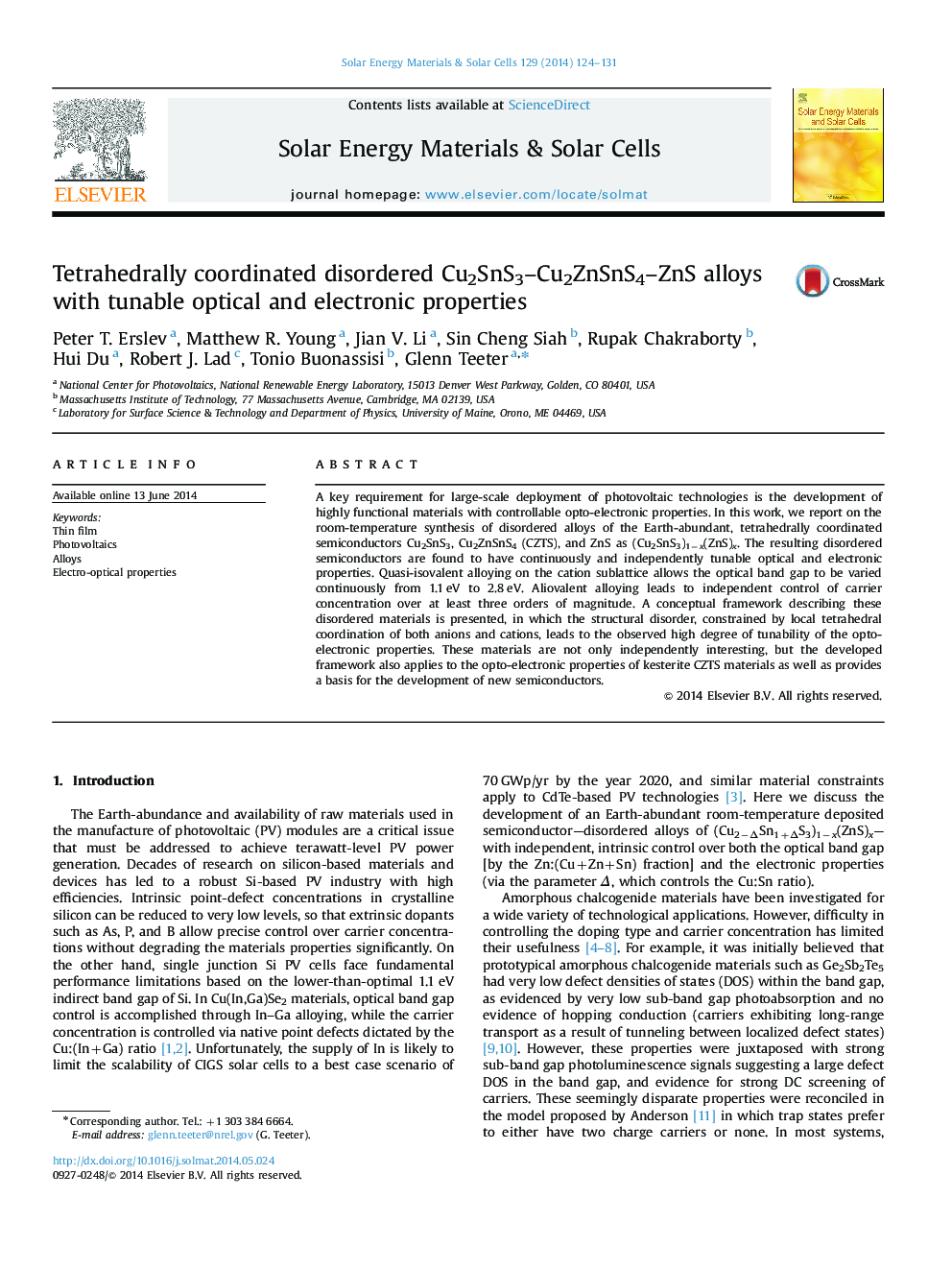| Article ID | Journal | Published Year | Pages | File Type |
|---|---|---|---|---|
| 78038 | Solar Energy Materials and Solar Cells | 2014 | 8 Pages |
•Earth-abundant semiconductor deposited at room temperature.•Independently tunable optical band gap and carrier concentration.•We present a model describing the atomic alloying processes.•Results on low-temperature materials extended to kesterite CZTS.
A key requirement for large-scale deployment of photovoltaic technologies is the development of highly functional materials with controllable opto-electronic properties. In this work, we report on the room-temperature synthesis of disordered alloys of the Earth-abundant, tetrahedrally coordinated semiconductors Cu2SnS3, Cu2ZnSnS4 (CZTS), and ZnS as (Cu2SnS3)1−x(ZnS)x. The resulting disordered semiconductors are found to have continuously and independently tunable optical and electronic properties. Quasi-isovalent alloying on the cation sublattice allows the optical band gap to be varied continuously from 1.1 eV to 2.8 eV. Aliovalent alloying leads to independent control of carrier concentration over at least three orders of magnitude. A conceptual framework describing these disordered materials is presented, in which the structural disorder, constrained by local tetrahedral coordination of both anions and cations, leads to the observed high degree of tunability of the opto-electronic properties. These materials are not only independently interesting, but the developed framework also applies to the opto-electronic properties of kesterite CZTS materials as well as provides a basis for the development of new semiconductors.
